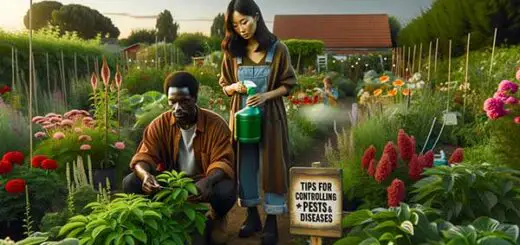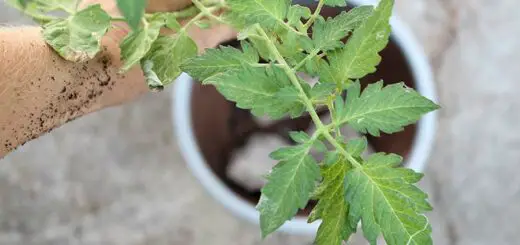Gardening Tips for Florida Beginners
With its unique blend of sun, rain, and soil, Florida offers a vibrant canvas for novice and expert gardeners. But if you’re dipping your toes into the world of Floridian gardening, you might wonder: “Where do I even begin?”
In the simplest terms:
- Start with understanding the soil.
- Choose plants suited to Florida’s climate.
- Learn how to protect them from pests and excessive heat.
But don’t stop there! Gardening is as much an art as it is a science. And with Florida’s diverse ecosystems, from the balmy south to the cooler north, a whole world of gardening wonders awaits you.
Curious about how to make the most of your Florida garden? Whether you dream of citrus trees heavy with fruit or a butterfly-filled oasis, we’ve got you covered. Dive in as we unpack the tips and tricks every Floridian beginner gardener should know.
Key Takeaways
- Soil Savvy: Understand Florida’s sandy soil and boost its fertility by adding organic compost and using mulch to retain moisture.
- Plant Selection: Choose native and Florida-friendly plants well-suited to local climate and conditions.
- Monthly Gardening Tasks: Plan gardening activities according to the month to stay ahead of changing climatic conditions.
- Water-Wise Gardening: Adopt deep, infrequent watering, explore xeriscaping, and water during cooler parts of the day to conserve water.
- Organic Pest Control: Harness beneficial insects, use organic deterrents like neem oil, and maintain healthy soil to fend off pests.
- Harnessing Sunlight: Understand plants’ light requirements, create natural shade, and consider relocating or rotating plants for optimal sunlight exposure.
- Tropical Fruit Trees: Dive into cultivating citrus, mangoes, and other tropical fruits suitable for Florida’s climate.
- Summer Gardening: Use mulch water wisely and temporarily shade plants during the hottest months.
- Lawn Care: Choose the suitable grass variety for your region, mow regularly without cutting too short, and fertilize appropriately.
- Attracting Pollinators: Incorporate nectar-rich flowers, shrubs, and trees to create a haven for butterflies and other pollinators.
Starting Right: Basics of Florida Soil and Composting
Florida’s unique terrain is dominated by sandy soil, quite different from the loamy or clay soils many gardeners might be accustomed to. This sandy texture provides excellent drainage, which can be both a blessing and a challenge.
On the one hand, it ensures that roots aren’t waterlogged during Florida’s frequent rains. On the other, it can sometimes drain too quickly, leading to a lack of essential nutrients.
Enhancing Florida’s Natural Soil:
To nourish plants effectively, consider amending the native soil. Add organic matter, like composted leaves or well-rotted manure, to increase water retention capabilities. This provides plants with a consistent moisture level and enriches the soil with beneficial microbes and nutrients.
The Art of Composting in Florida:
The humid climate of Florida accelerates the decomposition of organic materials, making composting a valuable tool for gardeners.
Select a shaded spot for your compost pile or bin to prevent it from drying out too quickly. Incorporate a mix of green (nitrogen-rich) materials like vegetable scraps and lawn clippings, and brown (carbon-rich) materials like dried leaves or cardboard. Turn the compost regularly to aerate it and speed up the breakdown process.
In a few months, you’ll have dark, crumbly, and nutrient-rich compost ready to enrich your garden beds.
Choosing the Right Plants: Native Floridian Vegetation
Gardening in Florida presents an opportunity to embrace many native plants, each adapted to thrive in the state’s unique conditions. Planting native species is not only an ecological choice, supporting local wildlife and reducing the need for pesticides, but it’s also practical. These plants have evolved to flourish in Florida’s soil and weather.
The Beauty of Going Native:
Native plants typically require less maintenance and are more resistant to pests and diseases. They’re adept at harnessing the nutrients from the sandy soil and can often withstand Florida’s fluctuating weather patterns.
Popular Native Plants for Newbies:
Some beginner-friendly native plants include:
- Firebush (Hamelia patens): A vibrant shrub that attracts hummingbirds and butterflies with red-orange blooms.
- Saw Palmetto (Serenoa repens): A resilient plant known for its fan-shaped leaves.
- Tickseed (Coreopsis): Florida’s state wildflower offers a burst of yellow or gold, with several species to choose from.
Understanding Florida’s Climate Zones: North vs. South Gardening
Florida’s vast expanse means it’s not a one-size-fits-all regarding gardening. Understanding regional differences is key to successful planting, from the frost-prone northern zones to the tropical southern tip.
Gardening by the Zones:
Florida is divided into several USDA hardiness zones, ranging from 8a in the north to 11a in the south. These zones provide a guideline on the lowest temperatures plants can endure. By familiarizing yourself with your specific zone, you can select plants best suited for your area.
Microclimates: Beyond the Zones:
Beyond these broad zones, microclimates can exist within your garden, influenced by factors like proximity to water, elevation, and urban structures. Recognizing these can help in placing plants in optimal spots. For instance, a nook sheltered from northern winds might be a cozy spot for a slightly less cold-hardy plant.
Adapting Your Approach:
The approach to gardening in Northern Florida, with its occasional frosts, will differ from the balmy conditions of Southern Florida. While the north might see deciduous plants shedding leaves in cooler months, the south enjoys a more tropical palette, with plants like palms and orchids thriving year-round.
Water-Wise Gardening: Efficient Irrigation Techniques for Florida Gardens
Understanding water conservation and efficient irrigation is paramount in the Sunshine State, where the sun reigns supreme for much of the year. A well-hydrated garden is the backbone of healthy plant growth. However, over-watering or watering at the wrong times can be counterproductive and wasteful.
The Principle of Deep, Infrequent Watering:
Rather than daily light watering, which encourages shallow root growth, aim for more profound, infrequent watering sessions. This approach fosters the development of deep roots, making plants more drought-tolerant and robust.
Harnessing the Power of Xeriscaping:
Xeriscaping is an innovative landscaping concept that revolves around water efficiency. It doesn’t mean you’ll have a garden filled with cacti; instead, it’s about choosing plants adapted to Florida’s conditions and arranging them to minimize water use. For instance, grouping plants with similar water needs together ensures you can water the zones of your garden differently based on their requirements.
Timing is Everything:
Watering during the cooler parts of the day, such as early morning or late evening, can significantly reduce water loss through evaporation. This ensures that more water reaches the roots and doesn’t simply vanish into the atmosphere.
Fending Off Pests: Organic Solutions to Florida’s Common Garden Invaders
No matter how well-tended a garden is, pests can emerge as uninvited guests. Florida’s warm climate is a haven for many i
nsects, but not all are harmful. The trick lies in identifying and addressing the harmful ones using eco-friendly methods.
Know Your Allies:
Beneficial insects like ladybugs, praying mantises, and lacewings are nature’s pest controllers. They prey on harmful bugs, helping to keep their populations in check. Encouraging these helpful critters by planting flowers they’re attracted to can be a proactive approach to pest management.
Organic Deterrents:
There’s a plethora of natural remedies that can keep pests at bay. Neem oil, for instance, is a versatile organic solution that deters various pests without harming beneficial insects. Diatomaceous earth, a powder from fossilized aquatic organisms, can be sprinkled around plants to fend off crawling insects like ants and beetles.
Healthy Soil, Healthy Plants:
Pest infestations are less common in plants that are healthy and robust. Ensuring your plants have the proper nutrients and are neither over-watered nor under-watered can make them less appealing to pests.
The Sunshine State: Harnessing Florida Sunlight for Optimal Plant Growth
Florida’s abundant sunlight is both a gift and a challenge for gardeners. While plants need sunlight for photosynthesis, the intense rays, especially during peak summer, can be too much for some plants.
The Light Spectrum:
Different plants have varied sunlight requirements. Some thrive in direct sunlight, while others prefer partial shade or filtered light. It’s crucial to understand the light preferences of each plant in your garden. This can be achieved by researching each plant or referring to the guidelines provided when purchasing them.
Creating Natural Shade:
Strategically placing taller plants, trellises, or garden structures can create pockets of shade for plants that prefer cooler conditions. Another tactic is to use shade cloths, which can be draped over plants during the hottest parts of the day. These cloths come in varying degrees of shading, allowing gardeners to tailor the amount of light each plant receives.
Rotation and Relocation:
For potted plants, consider rotating them periodically. This ensures that they receive uniform sunlight exposure, promoting even growth. If a particular area of your garden receives too much or too little sunlight, consider relocating plants to more suitable spots.
Tropical Fruit Trees for Beginners: Growing Citrus, Mangoes, and More
Florida’s climate offers a splendid opportunity for gardening enthusiasts to dive into tropical fruit cultivation. From the tangy delights of citrus to the sweet allure of mangoes, growing fruit trees can be rewarding.
A Citrus Journey:
Citrus trees, including oranges, lemons, and grapefruits, are iconic in Florida. When selecting a citrus variety, consider dwarf varieties, which are easier to manage and harvest. These trees thrive with well-draining soil, consistent moisture, and sunlight. Regular pruning will also help to encourage a more bountiful harvest.
Mangoes – The King of Fruits:
Mango trees, with their vast canopy and aromatic fruits, are a favorite among many Floridians. They require a sunny location and are relatively drought-resistant once established. However, they do appreciate deep watering during dry spells. For those with limited space, consider dwarf mango varieties that offer the same delicious fruit in a more compact form.
Other Tropical Delights:
Besides citrus and mangoes, Florida’s climate suits other tropical fruits like avocados, guavas, and lychees. Each has its unique care requirements, but a common thread is the need for well-draining soil, adequate sunlight, and protection from frost.
Beating the Heat: Tips for Gardening During Florida’s Hottest Months
Summer in Florida can be intense, with soaring temperatures and blazing sunlight. While these conditions are perfect for beachgoers, they can be challenging for many plants.
Mulch, The Unsung Hero:
A thick layer of organic mulch, such as straw or bark, can be a lifesaver for plants during the hot months. Mulch helps retain soil moisture, reduces weed growth, and regulates soil temperature. By keeping the soil cooler, mulch helps plants manage the stress of high temperatures.
Watering Wisdom:
While it’s essential to keep plants hydrated, how and when you water makes a significant difference. As mentioned, watering in the early morning or late evening reduces evaporation. Additionally, using soaker hoses or drip irrigation systems ensures water reaches the roots effectively without wasting it.
Providing a Break:
Consider installing temporary shade structures for particularly vulnerable plants during peak summer. Shade cloths, garden umbrellas, or even relocating potted plants to shaded areas can give them a respite from the relentless sun.
Lawn Care Essentials: Maintaining a Lush Green Florida Lawn
A green grass carpet can be the crowning jewel of a Floridian home, but achieving that lush lawn requires some know-how.
Selecting the Right Grass:
Florida’s diverse climate zones mean that not all grass varieties are suitable everywhere. St. Augustine grass is prevalent in many parts of Florida due to its tolerance to heat and humidity. Bermuda and Zoysia grass are other options, each with its unique attributes. When selecting grass, consider sun exposure, water availability, and traffic levels.
Mowing Matters:
Regular mowing keeps a lawn tidy, but you must cut the grass short enough. A taller lawn can shade the soil, helping retain moisture and suppress weed growth. Always ensure mower blades are sharp to avoid tearing the grass, which can stress it and make it prone to diseases.
Fertilizing Fundamentals:
Feed your lawn periodically with a balanced fertilizer. Consider using slow-release formulations that provide nutrients over an extended period. Remember to follow manufacturer guidelines to avoid over-fertilizing, which can harm your lawn and the environment.
Creating a Butterfly Haven: Florida-friendly Plants to Attract Pollinators
A garden alive with fluttering butterflies and buzzing bees isn’t just a visual treat; it’s a sign of a healthy ecosystem.
Why Pollinators Matter:
Pollinators, such as butterflies, bees, and hummingbirds, play a crucial role in plant reproduction. They transfer pollen between flowers, facilitating the production of fruits and seeds.
Plants That Attract Butterflies:
Flowers rich in nectar are magnets for butterflies. Add plants like Pentas, Milkweed (a favorite for Monarch butterflies), and Lantana to your garden. These plants draw butterflies and cater to their life cycle by providing spots for laying eggs.
Beyond Flowers:
While flowers are significant, remember shrubs and trees. Many offer essential habitats for pollinators and might provide nectar, leaves for caterpillars, or safe roosting spots.
FAQs on Gardening Tips for Florida Beginners
Q: What are the best tools for beginners to invest in for Florida gardening?
A: For new gardeners in Florida, essential tools include a sturdy hand trowel, pruning shears, a garden rake, a watering can with a fine spray, and a durable pair of gardening gloves.
Q: Are there specific flowers that thrive exceptionally well in Florida’s climate?
A: Yes, several flowers thrive in Florida, including Bougainvillea, Hibiscus, Coreopsis (Florida’s state flower), and Plumbago, to name a few.
Q: Given the state’s heavy rainfall, how can I improve drainage in my Florida garden?
A: Enhance drainage by adding organic matter to your soil, building raised garden beds, and ensuring your garden has a gentle slope to redirect excess water away from plant roots.
Q: Can I grow vegetables year-round in Florida?
A: Absolutely! Florida’s climate allows for year-round vegetable gardening. However, it’s essential to plant seasonal veggies, with certain crops better suited for cooler months and others for the warmer season.
Q: How do I protect my garden from Florida’s occasional frosts?
A: While rare, frosts can occur. Protect your plants by covering them with frost cloths or old bed sheets at night, watering them in the morning to raise soil temperature, and choosing frost-tolerant varieties.
Q: Is container gardening a good option for Florida beginners?
A: Yes, container gardening is a versatile choice, especially for those with limited space. Ensure you use well-draining soil and pots with adequate drainage holes. Also, move sensitive plants indoors during extreme weather conditions.
Q: How do I combat salt spray damage in coastal Florida gardens?
A: Opt for salt-tolerant plants, create windbreaks using fences or shrubs, and rinse your plants periodically with fresh water to minimize salt accumulation.



